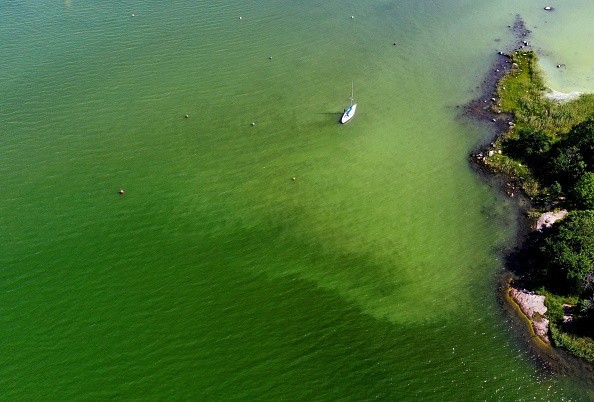Recently, the entire nation was gripped with the mysterious death of a family of three in California. Something caused the recent deaths of a family of three together with their dog on a footpath in the Sierra National Forest of Northern California, but what exactly led to their death remains unknown.
On Thursday, authorities said it's not likely that the close by mines contributed to this incident, but they have a suspicion that toxic algae bloom could be responsible.
The Mariposa County Sheriff's Office announced the demise of a married couple whose names are John Gerrish and Ellen Chung, their daughter named Miju who is 1-year-old, and their dog on Tuesday. On the evening of Monday, a friend reported that the family was missing.

The family's bodies were discovered on a hiking trail in a deserted region of the forest, some distance away from their car. Authorities said there was no understandable clue of what caused their death, like an indication of bodily trauma or a suicide note.
But the trail was close to some mines that were shut down, bringing up the likelihood that they were exposed to toxic gases. At first, authorities made a decision to treat the region as a dangerous site.
Also Read: The End is Near: Poisonous Algae Further Stressing Out Great Barrier Reef
Toxic Algae Bloom
Though the hazmat warning was called off by Wednesday, and the mines are not considered as a primary suspect for these deaths anymore.
On Thursday, Mariposa County Sheriff named Jeremy Briese told the Fresno Bee: "I don't believe it's connected to a mine."
On the shortlist of possible causes, authorities have said, it's a toxic algae bloom. Algae blooms occur when populations of algae in either a fresh or salt body of water quickly become excess, most of the time it could be because of warm weather and other conditions.
This population boom can wreck and ruin the surrounding wildlife, and some algae species has the ability to pump out great quantities of toxins as they expand. Ordinarily, the major harm to humans are from swimming in polluted water or feeding on contaminated animals.

Climate Change
But there is proof that some toxins can temporarily become airborne in the right conditions. Just like most health hazards, climate change has made these blooms more ordinary and more intense in some parts of the world, both in the U.S. and it is still expected to do so.
Symptoms of these blooms differ depending on the particular toxin, but can include headaches, diarrhea, vomiting, and other neurological symptoms.
Officials have begun to test water sources that are close by for the existence of these blooms, while the victims were set to go through an autopsy and toxicology tests on Thursday.
Briese told the Fresno Bee, "We don't know the cause...We won't rest until we figure it out."
Related Article : The Ocean Can't Breathe: Mexico-Sized Algae Bloom in the Arabian Sea Should Concern You
For more news, updates about toxic algae and similar topics don't forget to follow Nature World News!
© 2025 NatureWorldNews.com All rights reserved. Do not reproduce without permission.





